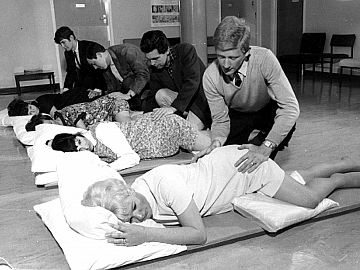 Your deputy editor is working at home today, while builders, tasked as far as I can see with knocking an ever-bigger hole in the wall of our flat, toil around me. In the office, tapping away with other desk-based types, it’s possible to think that we’re actually doing real work. Next to someone with a sledgehammer, I just feel a bit silly…
Your deputy editor is working at home today, while builders, tasked as far as I can see with knocking an ever-bigger hole in the wall of our flat, toil around me. In the office, tapping away with other desk-based types, it’s possible to think that we’re actually doing real work. Next to someone with a sledgehammer, I just feel a bit silly…
Anyway, back to the pretence. First up this week is Paula A. Michaels’ Lamaze: An International History, and Salim Al-Gailani and the author debate a book which deserves a wide readership (no. 1662, with response here).
Then we have Young People and the Shaping of Public Space in Melbourne, 1870–1914 by Simon Sleight. Andrew May believes this book is important because it reminds us to constantly ask who and what the city is for (no. 1661).
Next we turn to Peter Bell’s Social Conflict in the Age of Justinian: Its Nature, Management, and Mediation. Douglas Whalin and the author discuss a study which self-consciously embraces a unique paradigm for the understanding of the age of Justinian (no. 1660, with response here).
Finally, James Mawdesley hopes that Earls Colne’s Early Modern Landscapes by Dolly MacKinnon will encourage other scholars to visit the rich treasure trove of evidence of early modern England’s rural landscapes (no. 1659).
